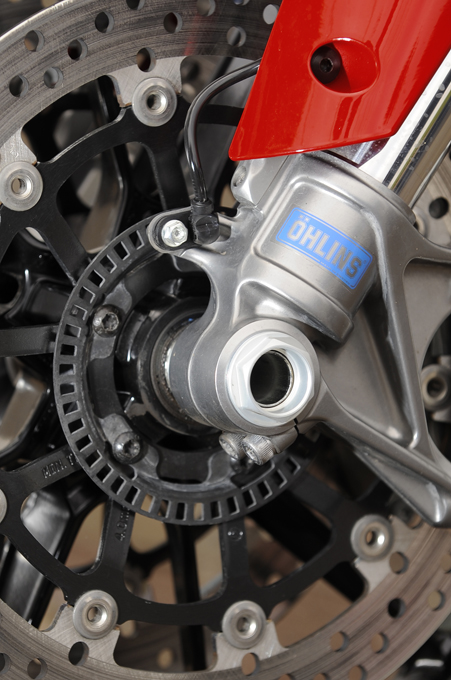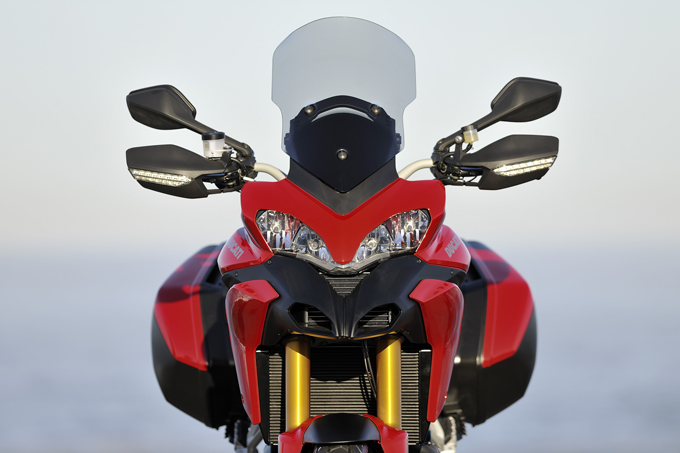EC Finally Proposes Rules for L-category Vehicle Type Approval
2011/04/08 | By Quincy LiangThe European Commission (EC) recently adopted a long-anticipated type-approval proposal for new L-category vehicles, providing safety and environmental requirements for a wide range of vehicles such as two- and three-wheel powered cycles, mopeds, motorcycles with and without side-cars, tricycles, on-road quads, and mini-cars.
In response to the proposal, the Association of Motorcycle Manufacturers in Europe (ACEM) noted that its members have long urged policymakers to establish a regulatory framework with a long-term vision that will ensure employment in and the competitiveness of the sector in Europe.
According to the association, the EC has proposed simplifying the legislation for L-category vehicles from 15 directives to just five regulations. The proposal would mandate the installation of advanced braking systems on new motorcycles and automatic headlamp-on switching on all L-category vehicles, along with ambitious emissions requirements.
ACEM emphasized that while broadly speaking the main approach of the EC appears sound, the proposal misses out on many important aspects which will need to be carefully considered by the European Council and the European Parliament. These crucial technical points will need to be addressed in the development of four additional regulations announced by the EC, which will encompass test procedures, technical details and administrative provisions.
More Recovery Needed
ACEM further noted that the proposal comes at a critical time for the motorcycle industry, since the economic crisis triggered a drop in registrations of L-category vehicles. In 2010 the EU market has shrunk by one third compared to pre-crisis figures, with a 30% decline in volume in the first half of the year compared to the same period of 2008, indicating that the sector is still far from recovery.
In this context, ACEM said that it wishes to underline the utmost importance of the progressive introduction of environmental and safety measures, allowing for sufficient lead-time, for new and existing types. This is particularly important given the price impact that the proposed legislative package will have, especially on small- and medium-displacement vehicles.
The EC-proposed provisions in regards to market surveillance are welcome as a means of safeguarding operators against unfair competition, ACEM noted. If they are implemented effectively, they will ensure the re-establishment of a level playing field and prevent non-compliant products from reaching the EU market, while restoring confidence in EU legislation, ACEM said.
"The motorcycle industry in Europe is looking forward to working with the EC, the European Parliament, and the Council on this proposal, and will release more detailed comments in the coming days," said an ACEM statement.
Stefan Pierer, ACEM President and CEO of Austrian high-end sport motorcycle manufacturer KTM, stated, "Since 2004 ACEM members have been at the forefront of road safety, with voluntary commitments on Automatic Headlamp On and Advanced Braking Systems. In regards to environmental measures, industry proposals have been laid out already in 2008 presenting the EC with a feasible roadmap. While the [EC] document reflects some of the industry proposals, the addition of some technically unrealistic requirements, which do not take into account current production and market realities, are of serious concern and require further detailed reflections, to ensure competitiveness and employment in the sector."

The Five Regulations
The whole package of five regulations now goes to the Council and the European Parliament, and is expected to become effective on January 1, 2013.
European Commission Vice-President Antonio Tajani, Commissioner for Industry and Entrepreneurship, commented, "Today's proposal is an example how we can make EU legislation lighter while increasing the functional safety and the environmental performance of L-category vehicles. Less legislation means less costs and administrative burden for the industry. At the same time we will considerably increase the safety of these vehicles and reduce their harmful emissions. We will moreover be able to tackle illegal products entering the EU internal market. What we have proposed today will benefit both industry and users of such vehicles."

Major provisions the package include the following:
- Increased safety
In 2008, 5,520 motorcycle riders died in road accidents in Europe. While the number of motorcycle fatalities has remained more or less constant, fatalities for other types of transport have gradually declined. The proposed regulation should lead to a number of new functional safety requirements, especially mandatory anti-lock braking systems (ABS) fitted to medium- and high-performance motorcycles. In addition, all L-category vehicles will be equipped with an automatic headlamp-on feature in order to increase rider and vehicle conspicuity and make them more visible to other vehicles. - Reduced emissions
Certain toxic emissions from road transport are decreasing, but the share that the L-category vehicle fleet contributes is significantly increasing. Three emission steps are proposed for the coming decade. The Commission proposes, among other things, a Euro 3, Euro 4, and Euro 5 step (and Euro 6 limits for motorcycles), with compliance required in 2014, 2017, and 2020, respectively. - Increased market surveillance
The introduction of more stringent market surveillance requirements will make it harder to place illegal products on the market while ensuring fair competition among L-category vehicle manufacturers, in a sector where the presence of non-compliant products may cause significant safety risks and environmental harm. - Simplified legislation
The proposal will also radically simplify the current legislative set of 15 directives by replacing them with just 5 regulations. - Adaptation to new technologies
The current legislative framework will be extended to plug-in hybrids and full-electric vehicles. In the L-category sector, such vehicles have been in mass production for a number of years.
This main proposal, which contains, among other things, the scope, vehicle categories, and emissions limits of the L category, will be followed in the coming two years by four additional regulations containing the test procedures, technical details, and administrative provisions.




